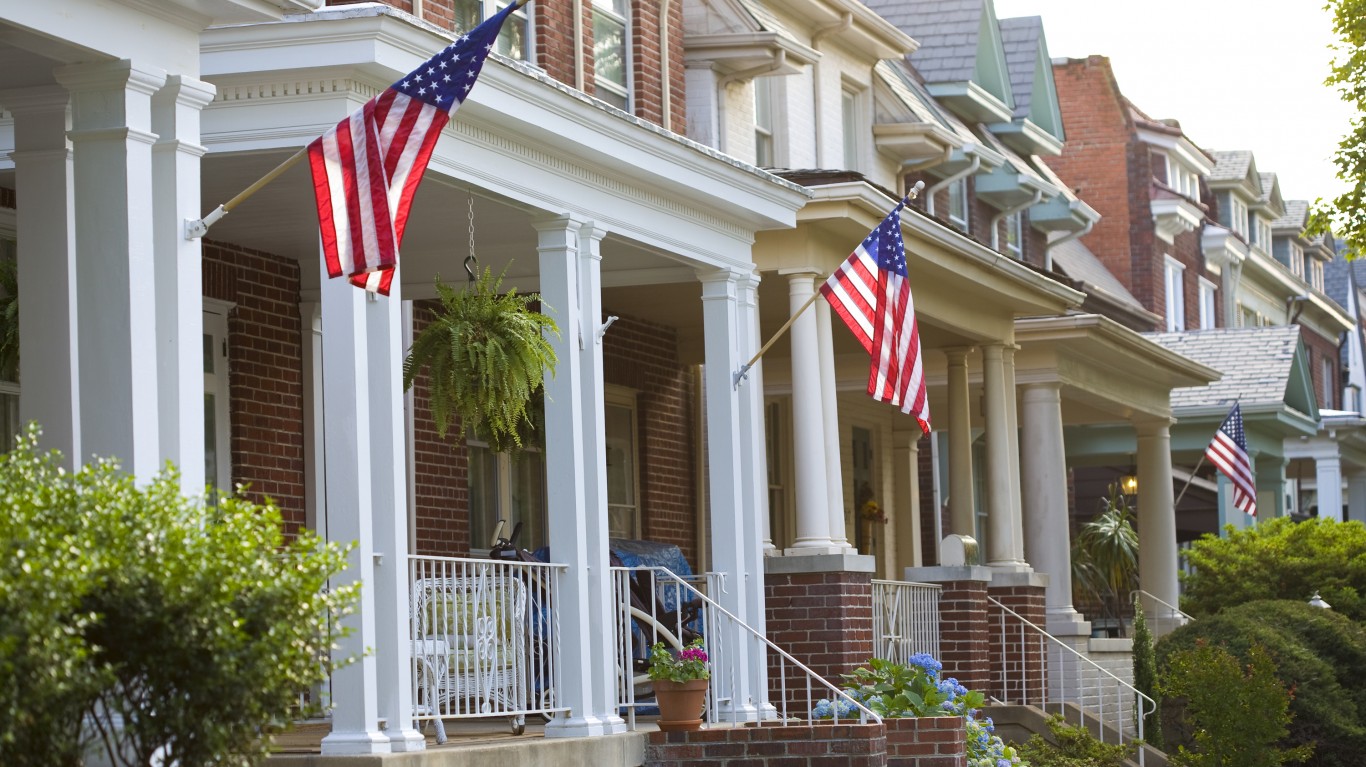
The United States Supreme Court struck down a Biden administration moratorium on evictions last August. Only months later, 4.4 million residential renters across the country said they are “somewhat” or “very likely” to face evictions within two months, according to the U.S. Census Bureau. (Also see: the city where people cannot afford to rent a place to live.)
Eviction moratoriums were implemented in some states after the COVID-19 induced economic mayhem hit many working-class households’ budgets and had landlords knocking on doors to collect late rent. The executive branch effort to extend eviction moratoriums was struck down because the Supreme Court ruled that Congress must specifically authorize it. Residential evictions disproportionately impact Black and Hispanic renters.
To determine the states with the most renters at risk of eviction, 24/7 Wall St. ranked states based on the percentage of renters who responded “very likely” to the question “How likely is it that your household will have to leave this home or apartment within the next two months because of eviction?” using data from the Census Bureau’s Household Pulse Survey.
Based on this latest data from Jan. 26, 2022 to Feb. 7, 2022, 10.1 million renters nationwide are not current on their rental payments, or nearly 16% or the nation’s 64.2 million renters. Of those who are late on their rent, 1.4 million said they are “very likely” to move within two months due to eviction– that is 2.2% of all renters or nearly 14% of renters who are behind on their rent.
States with the largest populations also have the largest number of renters, but they do not necessarily have the greatest share of renters facing evictions. (This city has the lowest rents in America.)
For example, New York ranks third among states in the number of renters (about 4.7 million) but ranks 21st in the share of renters who are “very likely” to be evicted within two months. In contrast, Alabama has far fewer renters than New York (about 761,000), 26th most among states, but it ranks third in the number of renters who are “very likely” facing imminent eviction.
Click here to see the states with the most renters at risk of eviction
Click here to see our detailed methodology

50. Delaware
> Renters very likely to be evicted in two months: 0.8%
> Renters three or more months behind on rent: 28.2% (22nd most)
> Renters receiving state or local gov’t rental assistance: 0.9% (7th least)
> January 2022 unemployment rate: 4.8% (12th highest)
[in-text-ad]
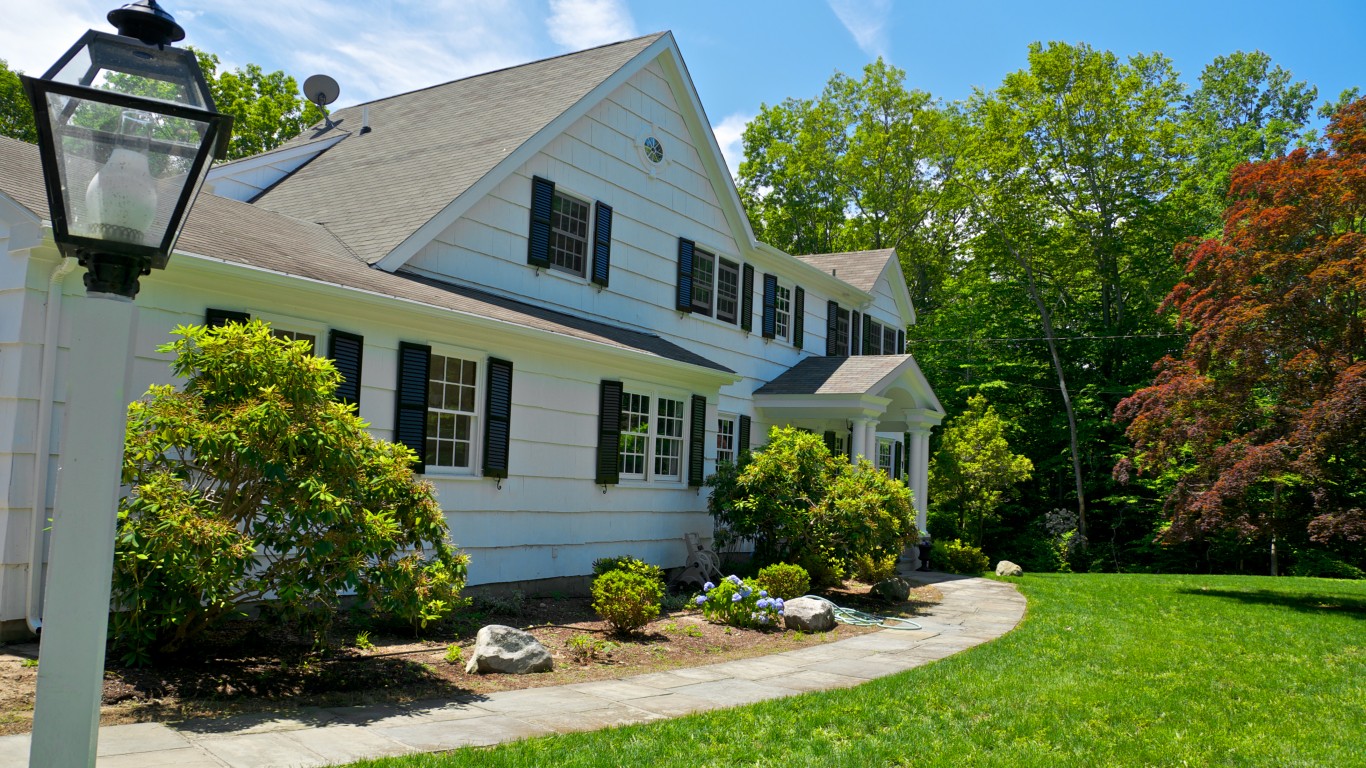
49. Connecticut
> Renters very likely to be evicted in two months: 1.4%
> Renters three or more months behind on rent: 33.2% (13th most)
> Renters receiving state or local gov’t rental assistance: 5.2% (20th least)
> January 2022 unemployment rate: 5.3% (6th highest)

48. Hawaii
> Renters very likely to be evicted in two months: 1.8%
> Renters three or more months behind on rent: 12.9% (5th least)
> Renters receiving state or local gov’t rental assistance: 4.0% (16th least)
> January 2022 unemployment rate: 4.4% (16th highest)
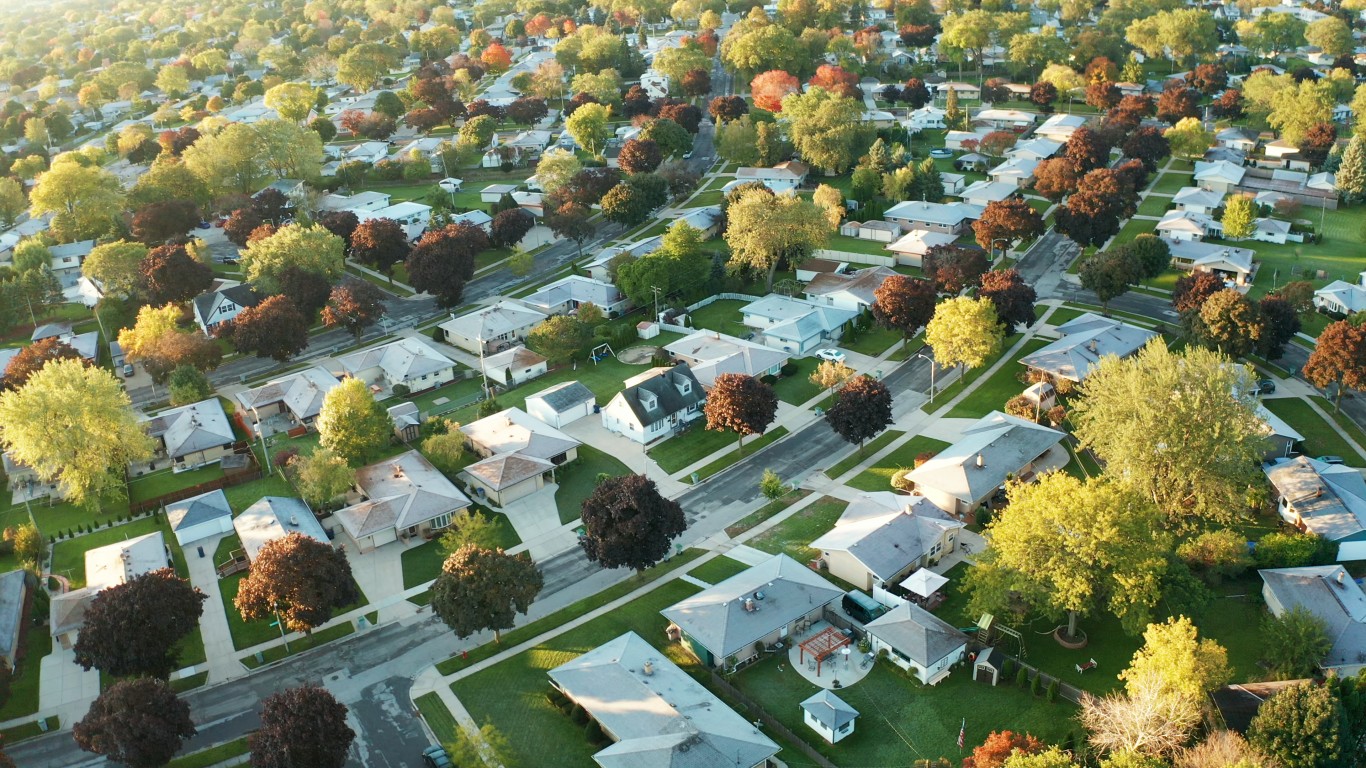
47. Ohio
> Renters very likely to be evicted in two months: 2.0%
> Renters three or more months behind on rent: 16.9% (12th least)
> Renters receiving state or local gov’t rental assistance: 7.4% (23rd least)
> January 2022 unemployment rate: 4.3% (19th highest)
[in-text-ad-2]

46. Missouri
> Renters very likely to be evicted in two months: 2.4%
> Renters three or more months behind on rent: 31.0% (19th most)
> Renters receiving state or local gov’t rental assistance: 2.1% (9th least)
> January 2022 unemployment rate: 3.8% (24th lowest)
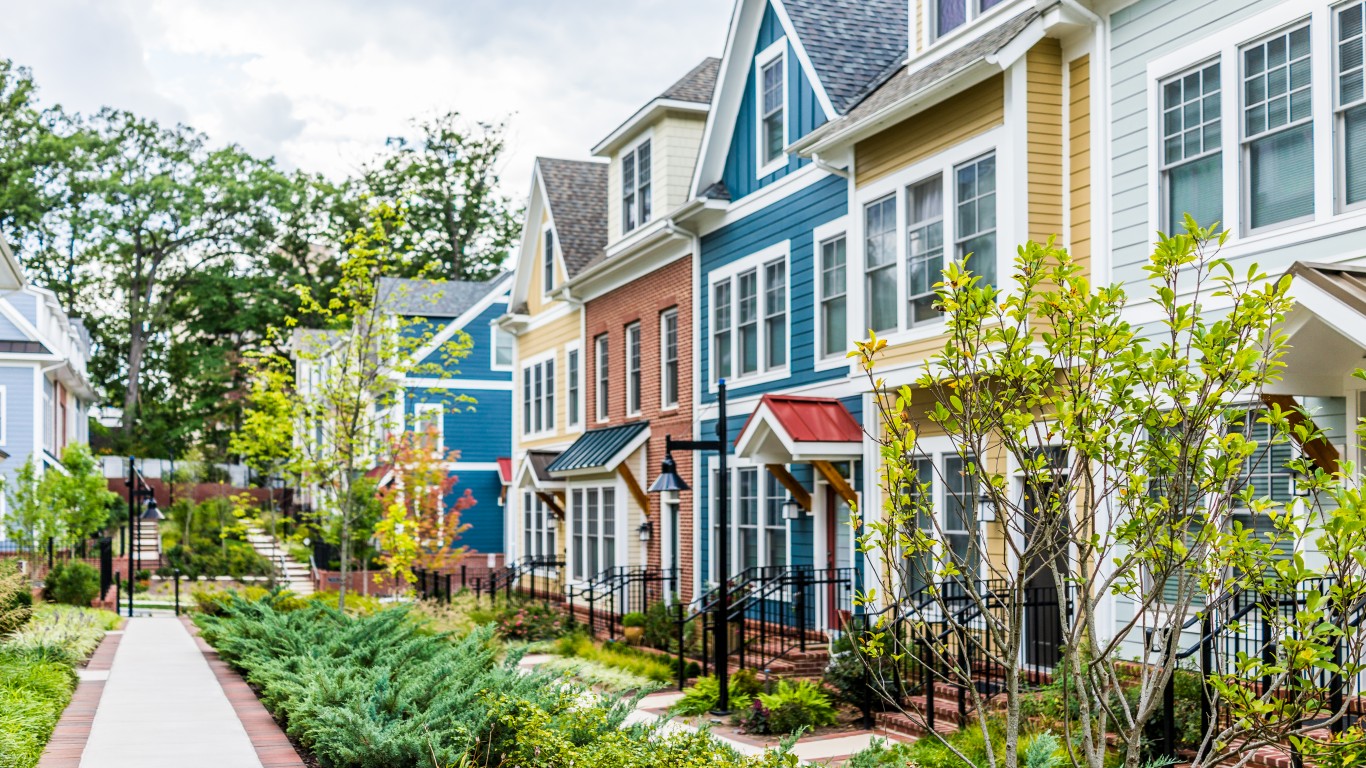
45. Maryland
> Renters very likely to be evicted in two months: 2.6%
> Renters three or more months behind on rent: 43.1% (5th most)
> Renters receiving state or local gov’t rental assistance: 7.4% (24th least)
> January 2022 unemployment rate: 5.4% (4th highest)
[in-text-ad]
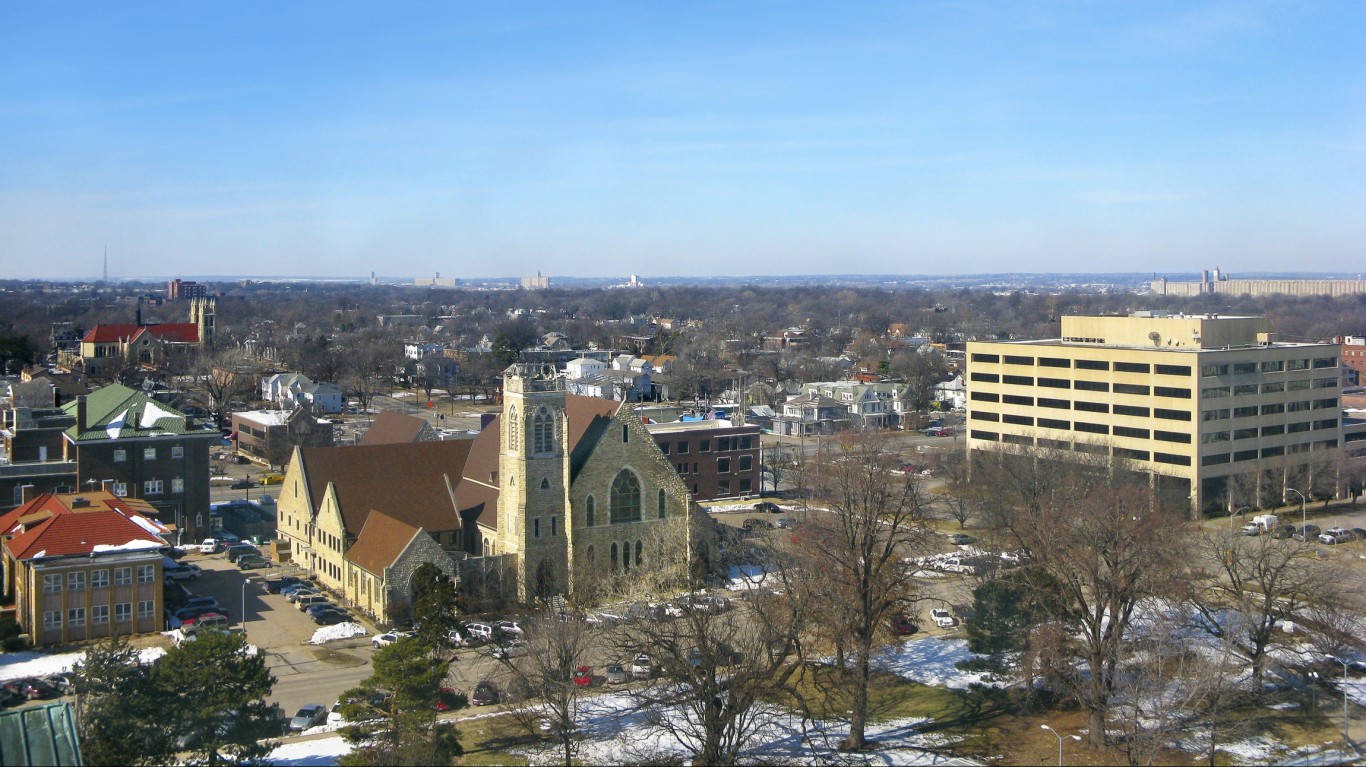
44. Kansas
> Renters very likely to be evicted in two months: 2.6%
> Renters three or more months behind on rent: 9.7% (3rd least)
> Renters receiving state or local gov’t rental assistance: 9.1% (22nd most)
> January 2022 unemployment rate: 2.6% (4th lowest)

43. Colorado
> Renters very likely to be evicted in two months: 3.9%
> Renters three or more months behind on rent: 16.3% (10th least)
> Renters receiving state or local gov’t rental assistance: 12.4% (11th most)
> January 2022 unemployment rate: 4.1% (23rd highest)
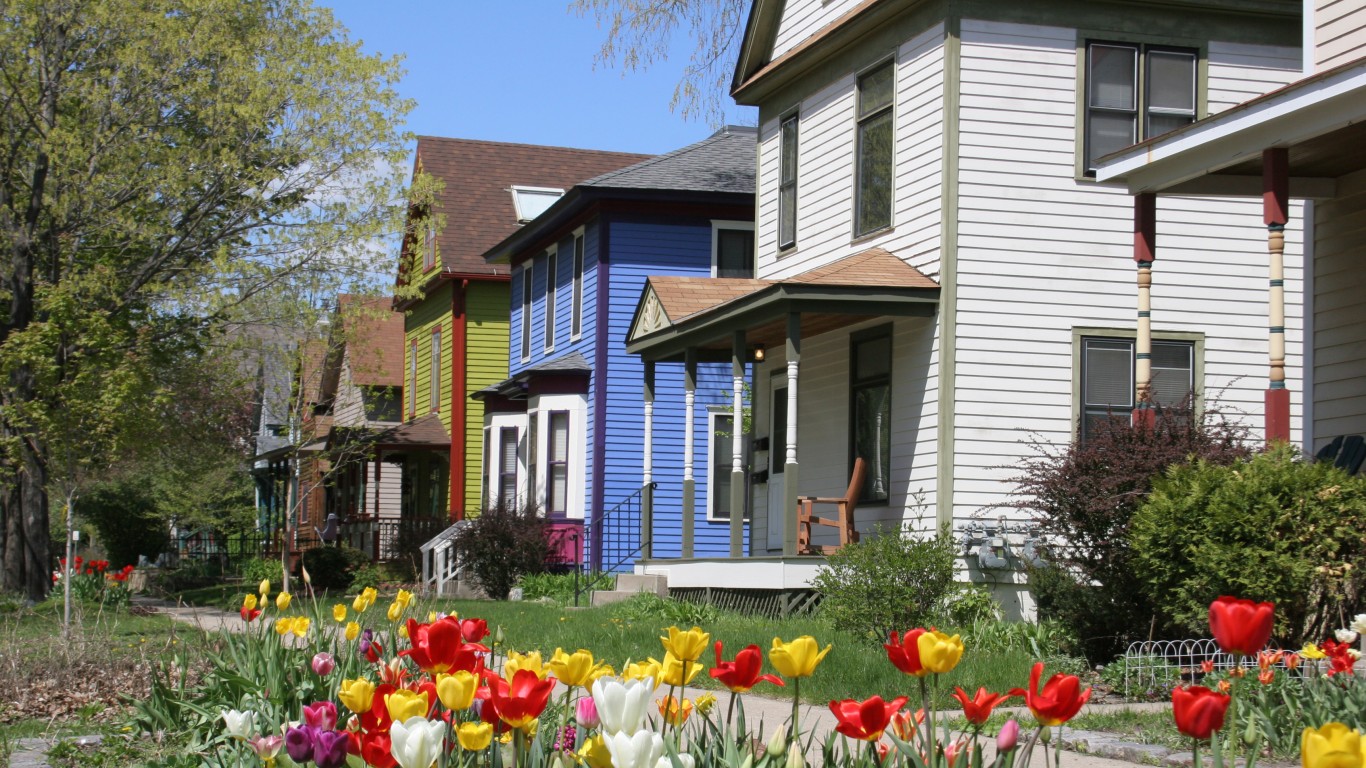
42. Minnesota
> Renters very likely to be evicted in two months: 4.3%
> Renters three or more months behind on rent: 24.6% (22nd least)
> Renters receiving state or local gov’t rental assistance: 10.4% (17th most)
> January 2022 unemployment rate: 2.9% (9th lowest)
[in-text-ad-2]
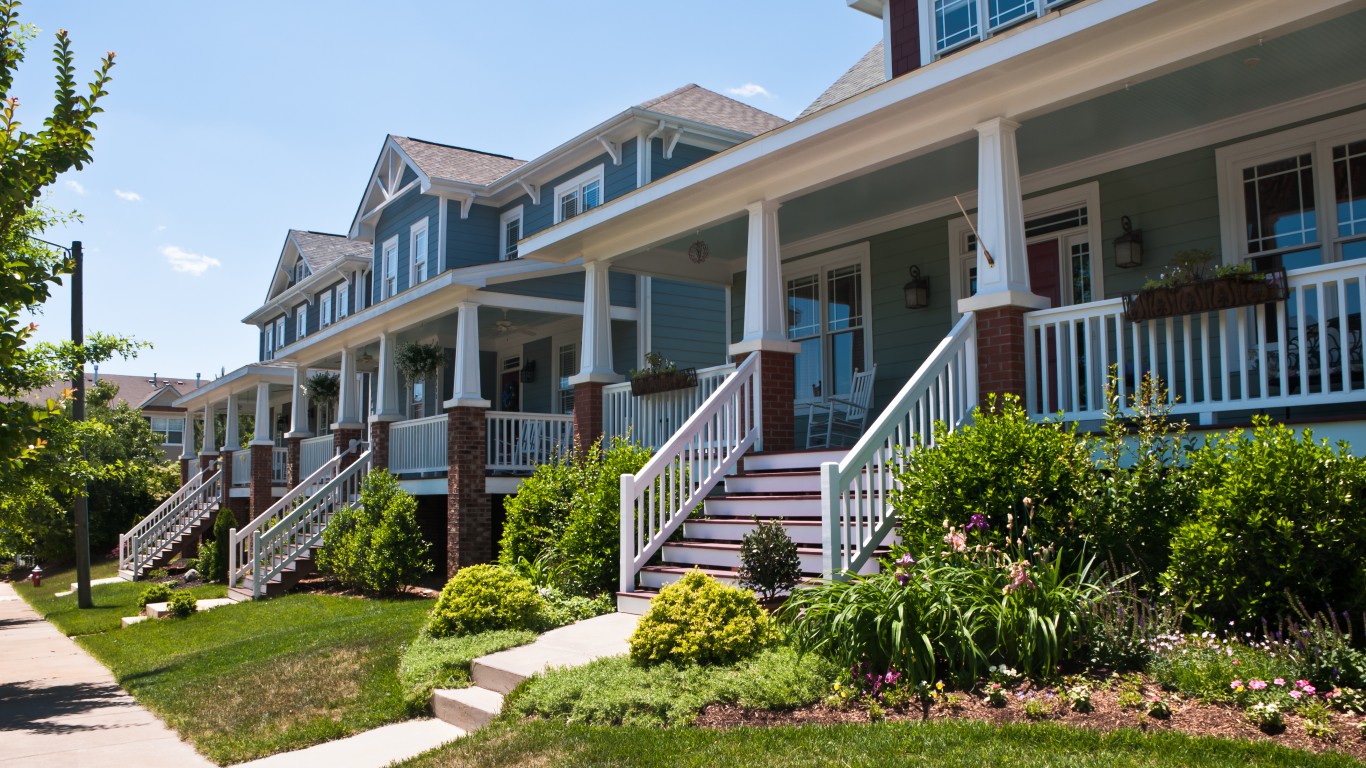
41. North Carolina
> Renters very likely to be evicted in two months: 4.6%
> Renters three or more months behind on rent: 26.9% (24th most)
> Renters receiving state or local gov’t rental assistance: 10.1% (19th most)
> January 2022 unemployment rate: 3.9% (25th lowest)
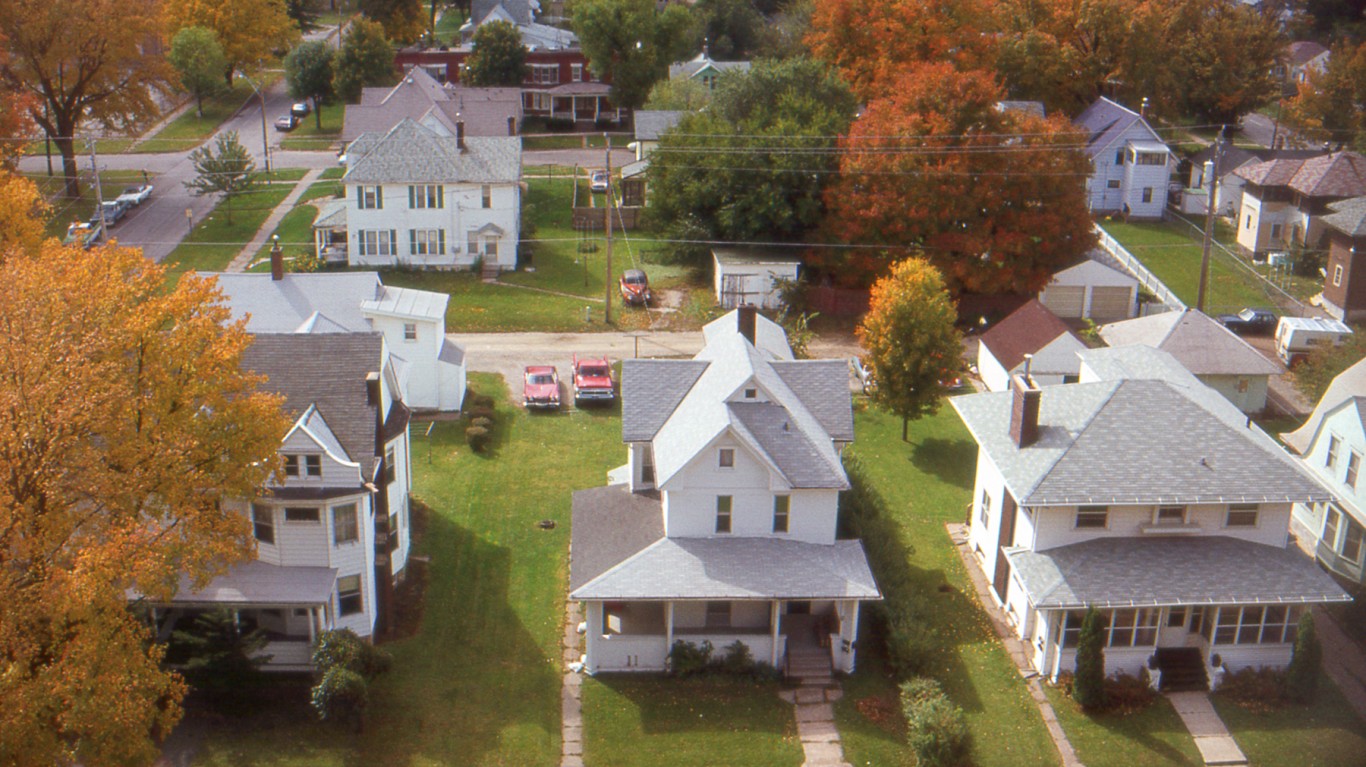
40. Iowa
> Renters very likely to be evicted in two months: 4.7%
> Renters three or more months behind on rent: 29.9% (20th most)
> Renters receiving state or local gov’t rental assistance: 2.5% (10th least)
> January 2022 unemployment rate: 3.7% (22nd lowest)
[in-text-ad]
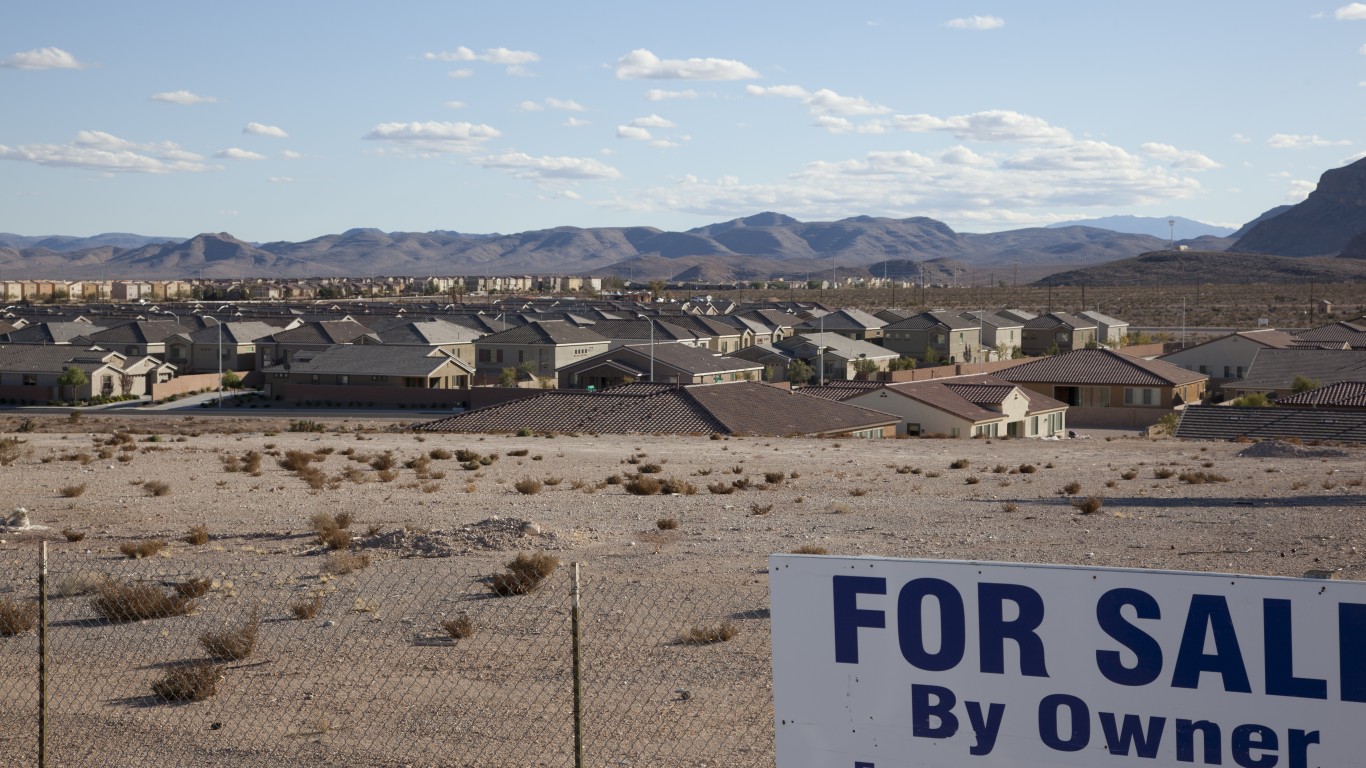
39. Nevada
> Renters very likely to be evicted in two months: 5.7%
> Renters three or more months behind on rent: 51.3% (3rd most)
> Renters receiving state or local gov’t rental assistance: 0.3% (5th least)
> January 2022 unemployment rate: 5.2% (8th highest)

38. South Carolina
> Renters very likely to be evicted in two months: 5.7%
> Renters three or more months behind on rent: 43.6% (4th most)
> Renters receiving state or local gov’t rental assistance: 0.8% (6th least)
> January 2022 unemployment rate: 3.5% (20th lowest)
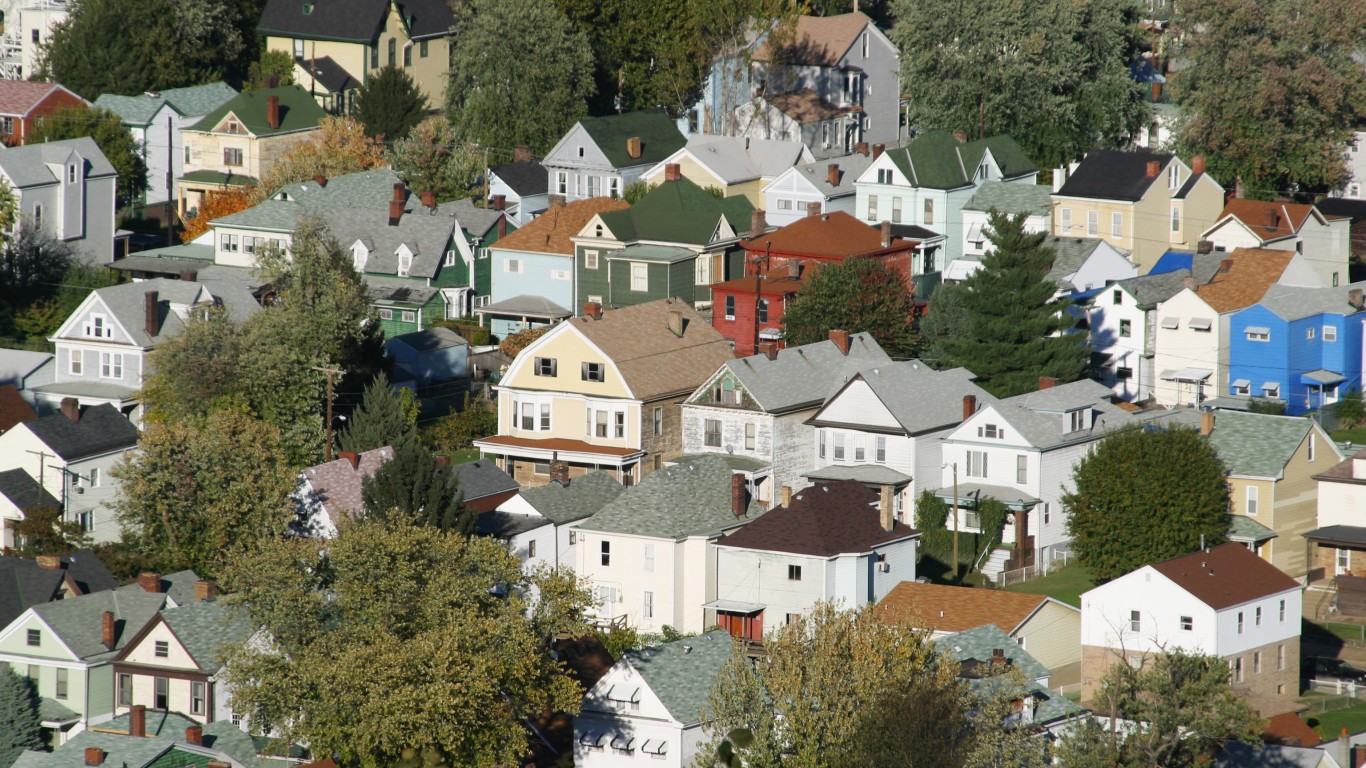
37. West Virginia
> Renters very likely to be evicted in two months: 6.3%
> Renters three or more months behind on rent: 31.1% (18th most)
> Renters receiving state or local gov’t rental assistance: N/A
> January 2022 unemployment rate: 4.1% (23rd highest)
[in-text-ad-2]

36. Washington
> Renters very likely to be evicted in two months: 6.3%
> Renters three or more months behind on rent: 21.3% (18th least)
> Renters receiving state or local gov’t rental assistance: 10.8% (14th most)
> January 2022 unemployment rate: 4.4% (16th highest)

35. New Jersey
> Renters very likely to be evicted in two months: 6.5%
> Renters three or more months behind on rent: 29.7% (21st most)
> Renters receiving state or local gov’t rental assistance: 6.6% (22nd least)
> January 2022 unemployment rate: 5.2% (8th highest)
[in-text-ad]

34. Nebraska
> Renters very likely to be evicted in two months: 6.7%
> Renters three or more months behind on rent: 9.3% (2nd least)
> Renters receiving state or local gov’t rental assistance: 4.7% (18th least)
> January 2022 unemployment rate: 2.2% (2nd lowest)

33. Massachusetts
> Renters very likely to be evicted in two months: 8.3%
> Renters three or more months behind on rent: 13.4% (6th least)
> Renters receiving state or local gov’t rental assistance: 3.9% (15th least)
> January 2022 unemployment rate: 4.8% (12th highest)

32. New Hampshire
> Renters very likely to be evicted in two months: 8.7%
> Renters three or more months behind on rent: 32.2% (14th most)
> Renters receiving state or local gov’t rental assistance: 19.7% (5th most)
> January 2022 unemployment rate: 2.9% (9th lowest)
[in-text-ad-2]

31. Michigan
> Renters very likely to be evicted in two months: 9.4%
> Renters three or more months behind on rent: 34.7% (10th most)
> Renters receiving state or local gov’t rental assistance: 8.8% (23rd most)
> January 2022 unemployment rate: 4.9% (11th highest)

30. Alaska
> Renters very likely to be evicted in two months: 10.0%
> Renters three or more months behind on rent: 31.3% (16th most)
> Renters receiving state or local gov’t rental assistance: 41.1% (the most)
> January 2022 unemployment rate: 5.6% (3rd highest)
[in-text-ad]
29. North Dakota
> Renters very likely to be evicted in two months: 10.2%
> Renters three or more months behind on rent: 16.8% (11th least)
> Renters receiving state or local gov’t rental assistance: 5.4% (21st least)
> January 2022 unemployment rate: 3.1% (14th lowest)

28. Arizona
> Renters very likely to be evicted in two months: 10.7%
> Renters three or more months behind on rent: 15.0% (7th least)
> Renters receiving state or local gov’t rental assistance: 8.0% (24th most)
> January 2022 unemployment rate: 3.7% (22nd lowest)
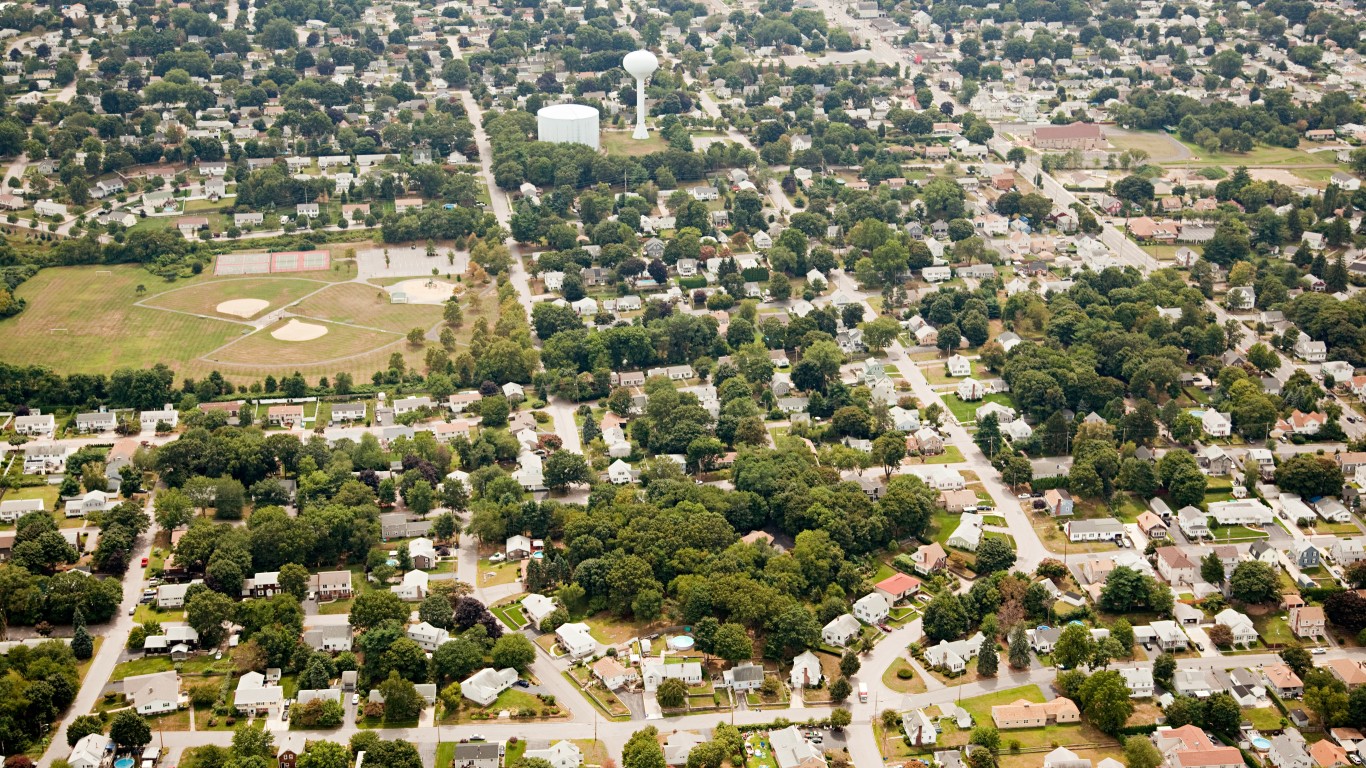
27. Rhode Island
> Renters very likely to be evicted in two months: 10.8%
> Renters three or more months behind on rent: 19.0% (14th least)
> Renters receiving state or local gov’t rental assistance: 9.2% (21st most)
> January 2022 unemployment rate: 4.2% (22nd highest)
[in-text-ad-2]
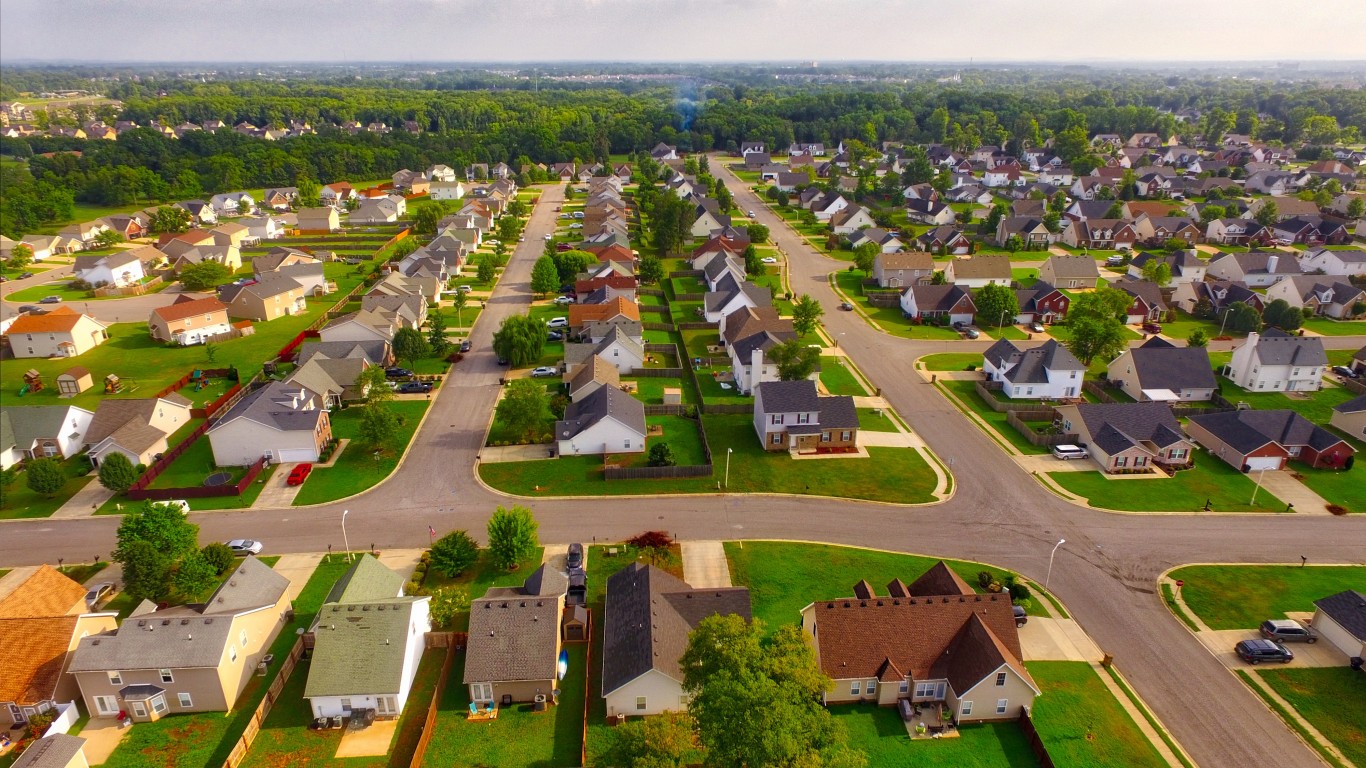
26. Tennessee
> Renters very likely to be evicted in two months: 11.0%
> Renters three or more months behind on rent: 20.2% (16th least)
> Renters receiving state or local gov’t rental assistance: 3.1% (14th least)
> January 2022 unemployment rate: 3.5% (20th lowest)
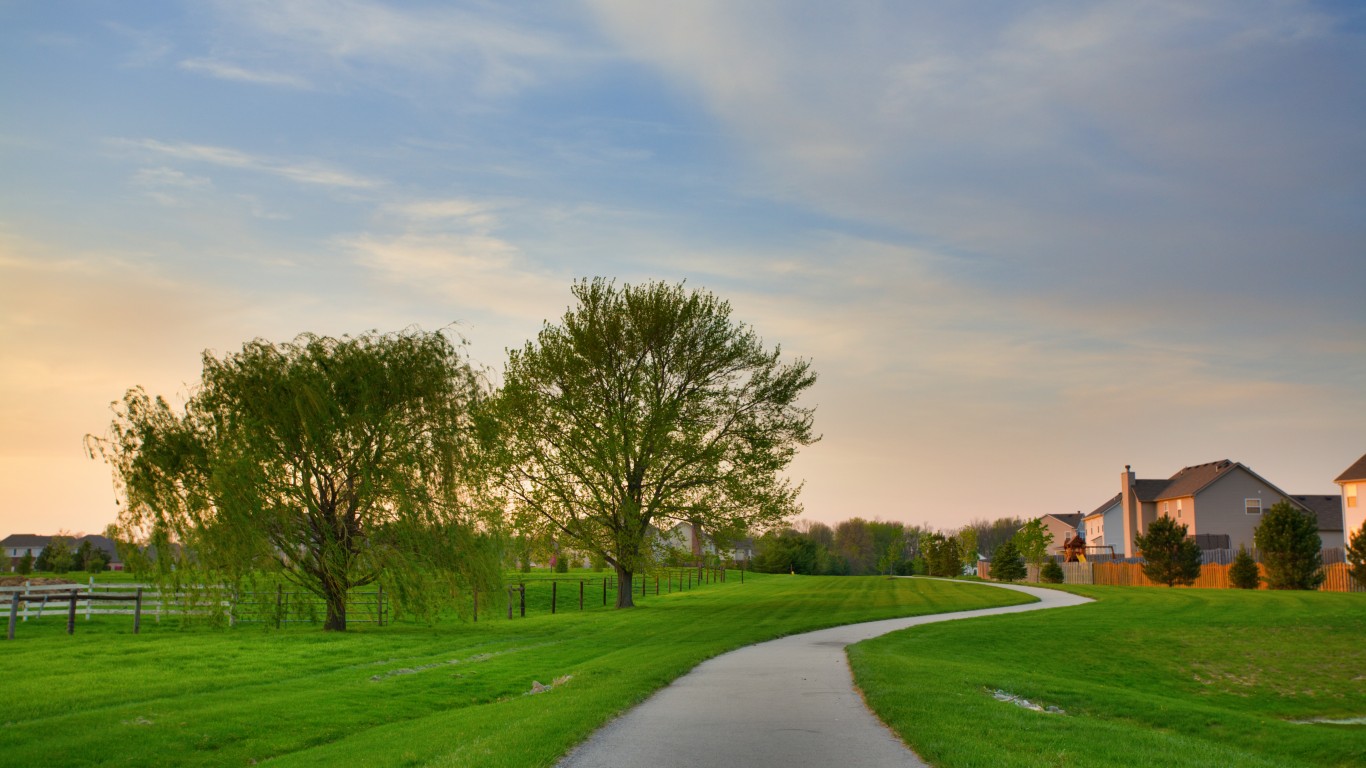
25. Indiana
> Renters very likely to be evicted in two months: 11.9%
> Renters three or more months behind on rent: 11.6% (4th least)
> Renters receiving state or local gov’t rental assistance: 5.1% (19th least)
> January 2022 unemployment rate: 2.4% (3rd lowest)
[in-text-ad]

24. Vermont
> Renters very likely to be evicted in two months: 12.2%
> Renters three or more months behind on rent: 41.0% (7th most)
> Renters receiving state or local gov’t rental assistance: N/A
> January 2022 unemployment rate: 3.0% (12th lowest)

23. Mississippi
> Renters very likely to be evicted in two months: 13.2%
> Renters three or more months behind on rent: 59.1% (the most)
> Renters receiving state or local gov’t rental assistance: 4.3% (17th least)
> January 2022 unemployment rate: 4.6% (15th highest)

22. Oregon
> Renters very likely to be evicted in two months: 14.1%
> Renters three or more months behind on rent: 34.6% (11th most)
> Renters receiving state or local gov’t rental assistance: 10.7% (16th most)
> January 2022 unemployment rate: 4.3% (19th highest)
[in-text-ad-2]
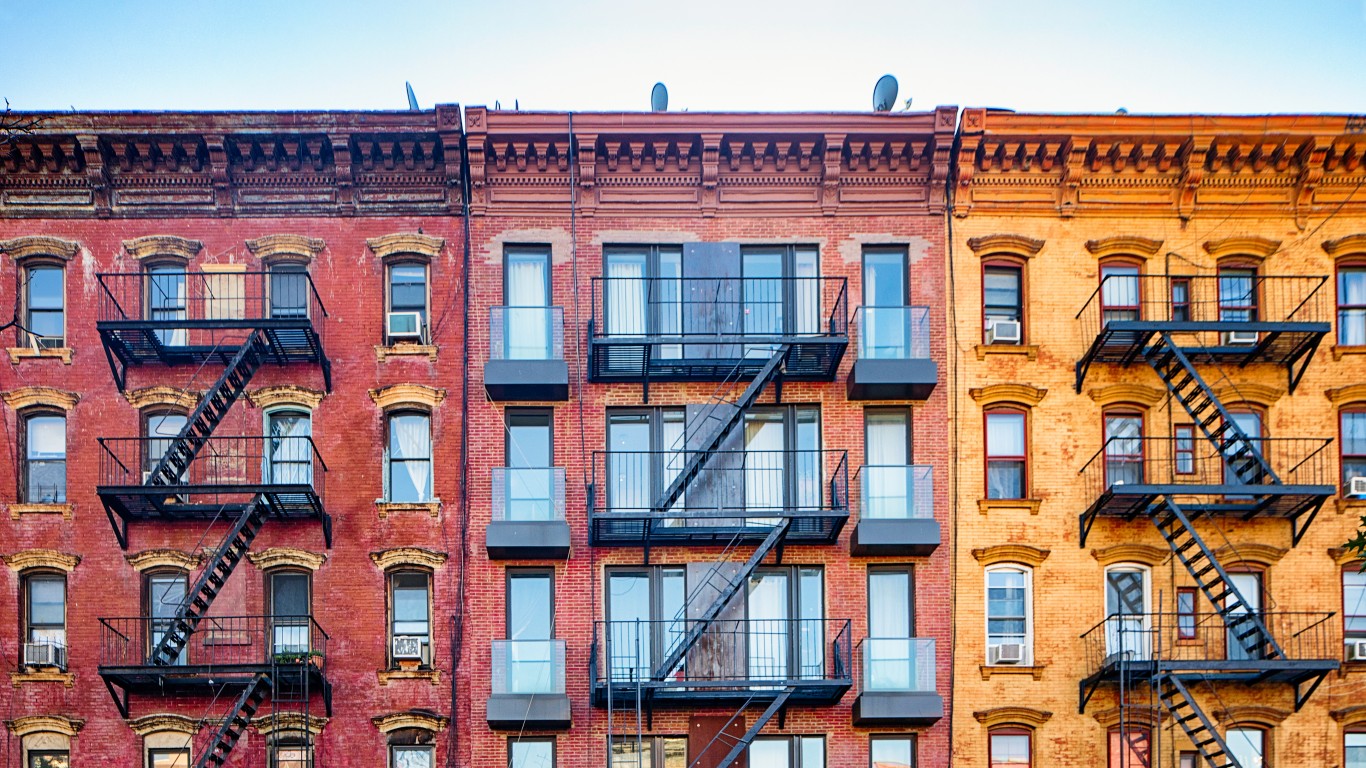
21. New York
> Renters very likely to be evicted in two months: 14.2%
> Renters three or more months behind on rent: 25.8% (25th least)
> Renters receiving state or local gov’t rental assistance: 1.3% (8th least)
> January 2022 unemployment rate: 5.3% (6th highest)

20. Virginia
> Renters very likely to be evicted in two months: 14.4%
> Renters three or more months behind on rent: 8.2% (the least)
> Renters receiving state or local gov’t rental assistance: 18.7% (6th most)
> January 2022 unemployment rate: 3.3% (17th lowest)
[in-text-ad]

19. Idaho
> Renters very likely to be evicted in two months: 14.9%
> Renters three or more months behind on rent: 19.4% (15th least)
> Renters receiving state or local gov’t rental assistance: 27.0% (2nd most)
> January 2022 unemployment rate: 3.0% (12th lowest)

18. Arkansas
> Renters very likely to be evicted in two months: 15.5%
> Renters three or more months behind on rent: 33.5% (12th most)
> Renters receiving state or local gov’t rental assistance: 22.6% (3rd most)
> January 2022 unemployment rate: 3.2% (16th lowest)
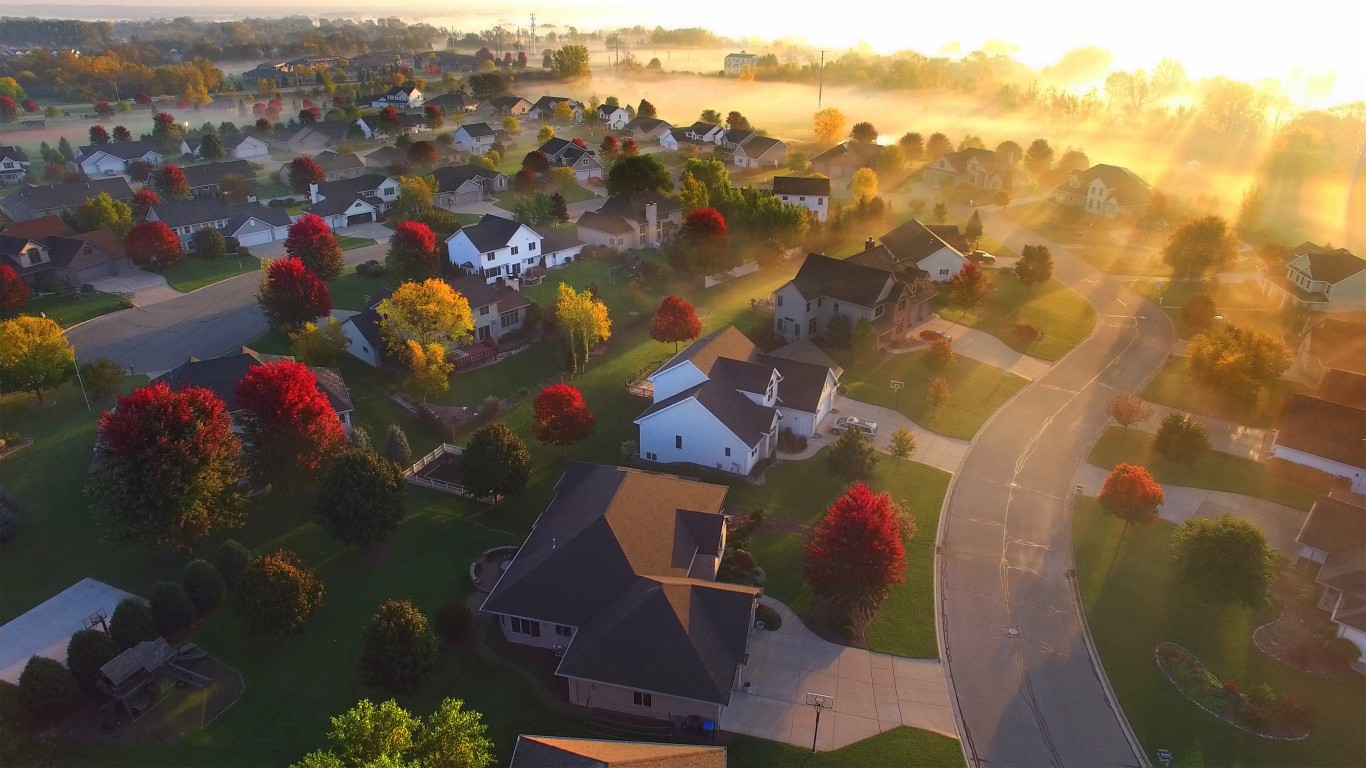
17. Wisconsin
> Renters very likely to be evicted in two months: 15.8%
> Renters three or more months behind on rent: 37.4% (8th most)
> Renters receiving state or local gov’t rental assistance: 22.2% (4th most)
> January 2022 unemployment rate: 3.0% (12th lowest)
[in-text-ad-2]

16. Georgia
> Renters very likely to be evicted in two months: 16.1%
> Renters three or more months behind on rent: 25.5% (24th least)
> Renters receiving state or local gov’t rental assistance: N/A
> January 2022 unemployment rate: 3.2% (16th lowest)
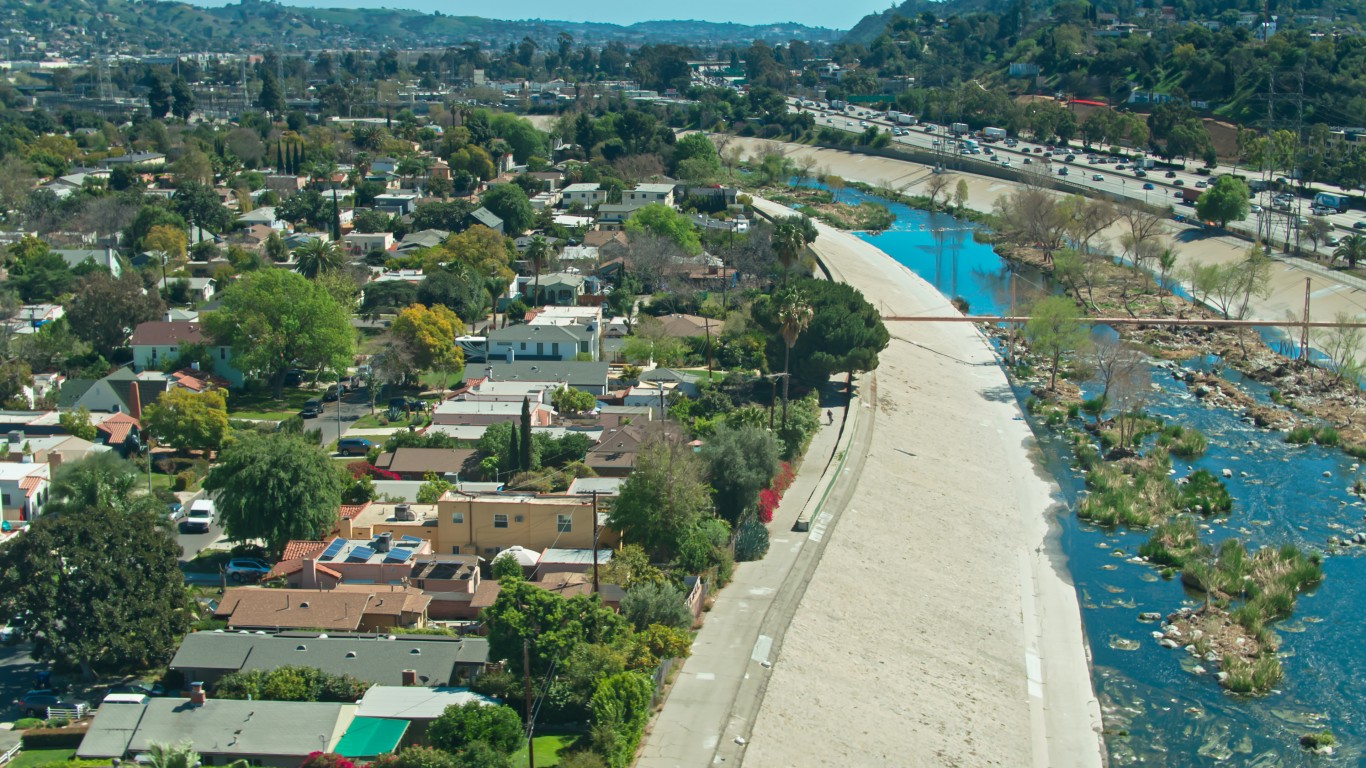
15. California
> Renters very likely to be evicted in two months: 16.4%
> Renters three or more months behind on rent: 27.1% (23rd most)
> Renters receiving state or local gov’t rental assistance: 9.9% (20th most)
> January 2022 unemployment rate: 5.8% (2nd highest)
[in-text-ad]

14. Oklahoma
> Renters very likely to be evicted in two months: 18.6%
> Renters three or more months behind on rent: 21.2% (17th least)
> Renters receiving state or local gov’t rental assistance: 2.6% (11th least)
> January 2022 unemployment rate: 2.7% (6th lowest)
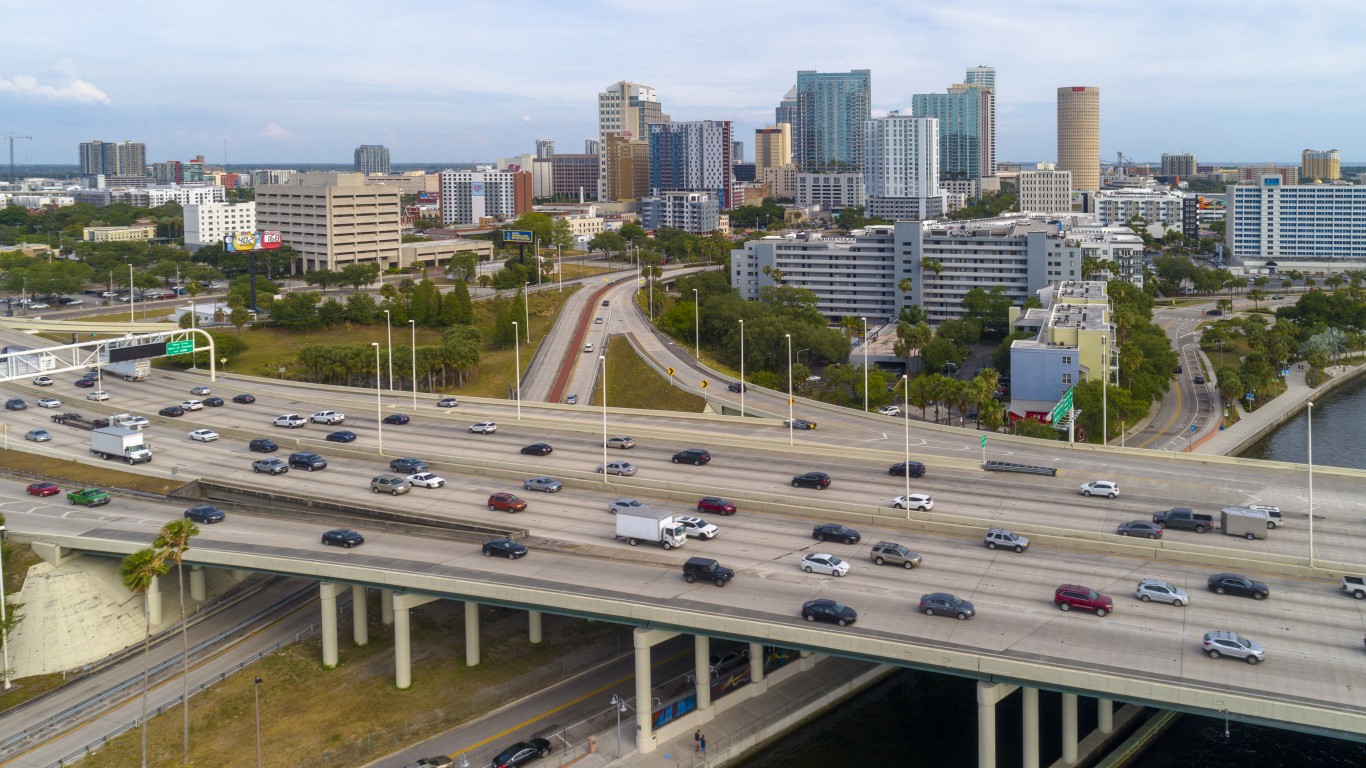
13. Florida
> Renters very likely to be evicted in two months: 19.4%
> Renters three or more months behind on rent: 15.0% (8th least)
> Renters receiving state or local gov’t rental assistance: 12.8% (10th most)
> January 2022 unemployment rate: 3.5% (20th lowest)

12. Wyoming
> Renters very likely to be evicted in two months: 19.6%
> Renters three or more months behind on rent: 42.6% (6th most)
> Renters receiving state or local gov’t rental assistance: 8.0% (25th most)
> January 2022 unemployment rate: 3.8% (24th lowest)
[in-text-ad-2]
11. Illinois
> Renters very likely to be evicted in two months: 20.2%
> Renters three or more months behind on rent: 26.7% (25th most)
> Renters receiving state or local gov’t rental assistance: 10.7% (15th most)
> January 2022 unemployment rate: 5.0% (10th highest)

10. Utah
> Renters very likely to be evicted in two months: 20.2%
> Renters three or more months behind on rent: 24.5% (21st least)
> Renters receiving state or local gov’t rental assistance: 13.3% (8th most)
> January 2022 unemployment rate: 2.2% (2nd lowest)
[in-text-ad]
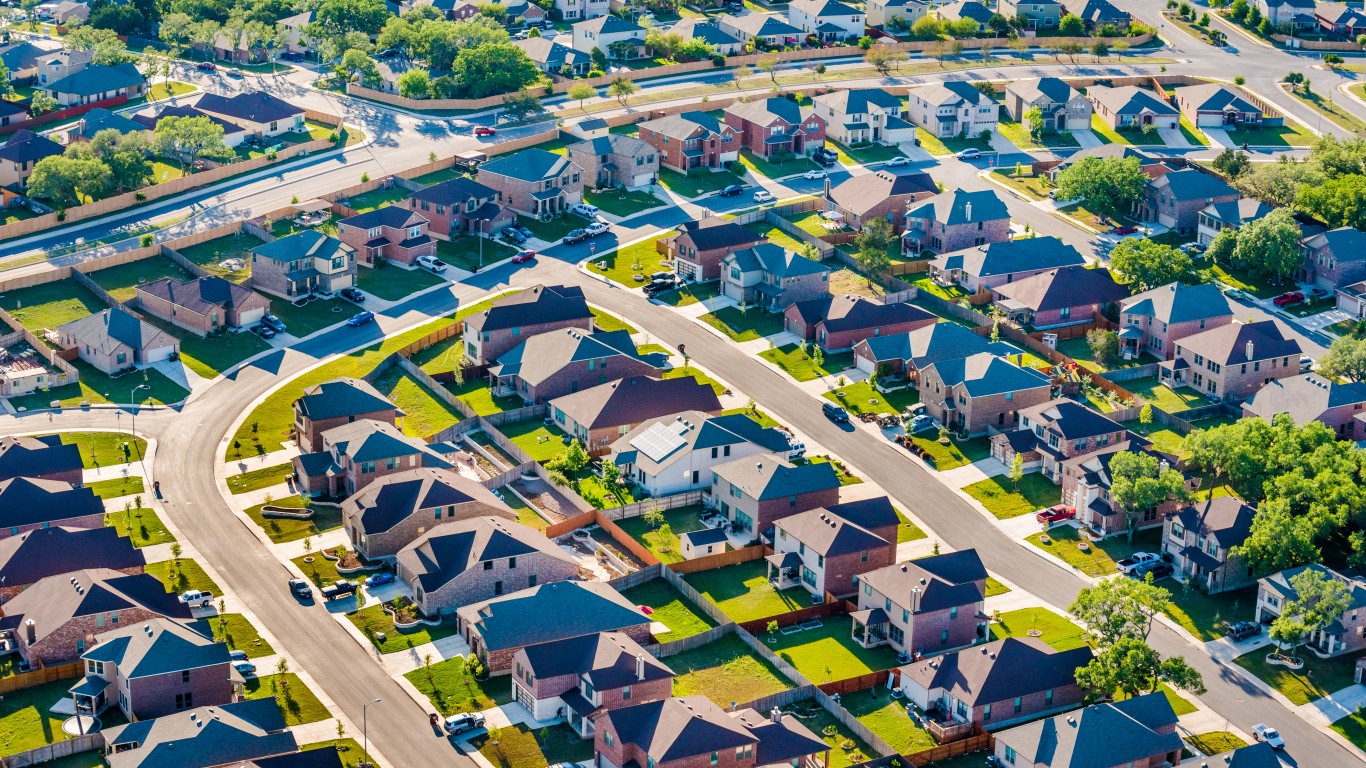
9. Texas
> Renters very likely to be evicted in two months: 20.7%
> Renters three or more months behind on rent: 24.7% (23rd least)
> Renters receiving state or local gov’t rental assistance: 2.7% (12th least)
> January 2022 unemployment rate: 4.8% (12th highest)

8. New Mexico
> Renters very likely to be evicted in two months: 21.2%
> Renters three or more months behind on rent: 31.8% (15th most)
> Renters receiving state or local gov’t rental assistance: 7.5% (25th least)
> January 2022 unemployment rate: 5.9% (the highest)
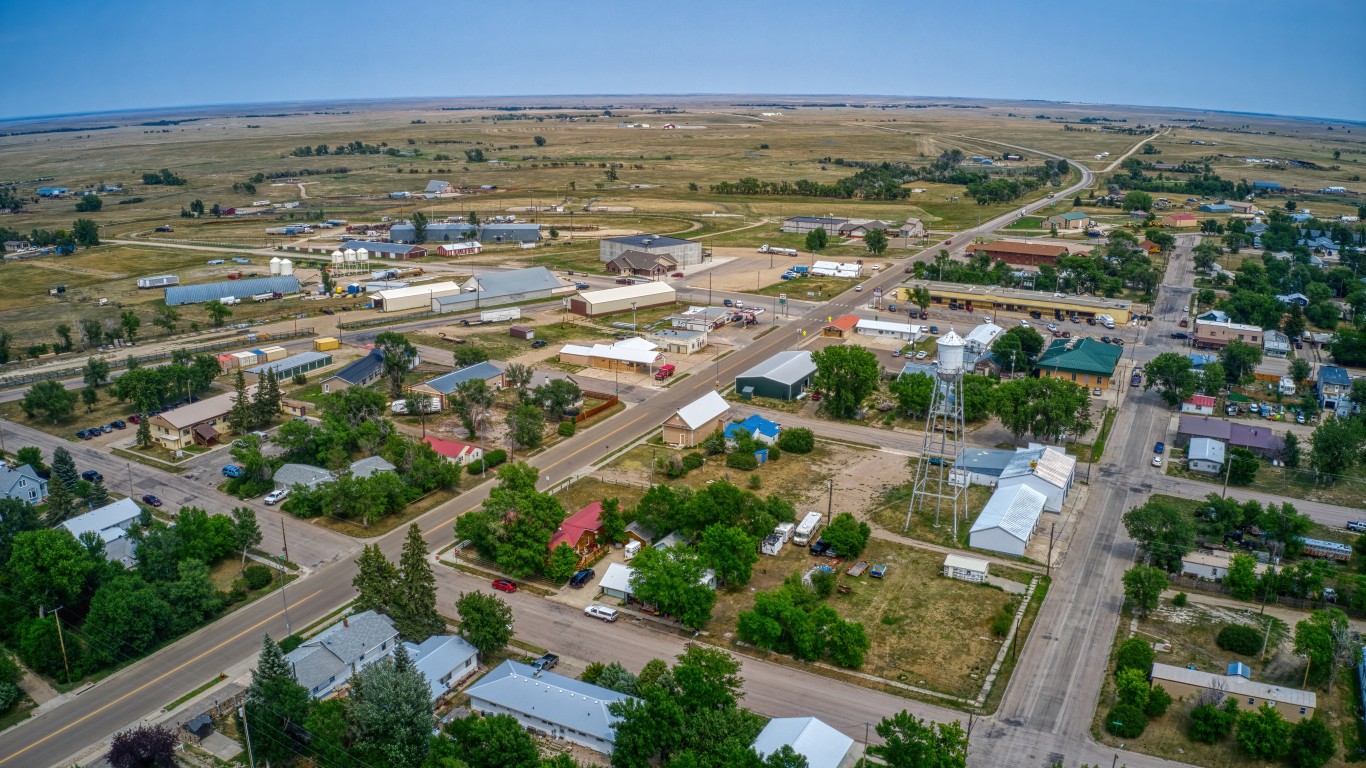
7. South Dakota
> Renters very likely to be evicted in two months: 24.1%
> Renters three or more months behind on rent: 53.4% (2nd most)
> Renters receiving state or local gov’t rental assistance: 16.1% (7th most)
> January 2022 unemployment rate: 2.8% (7th lowest)
[in-text-ad-2]
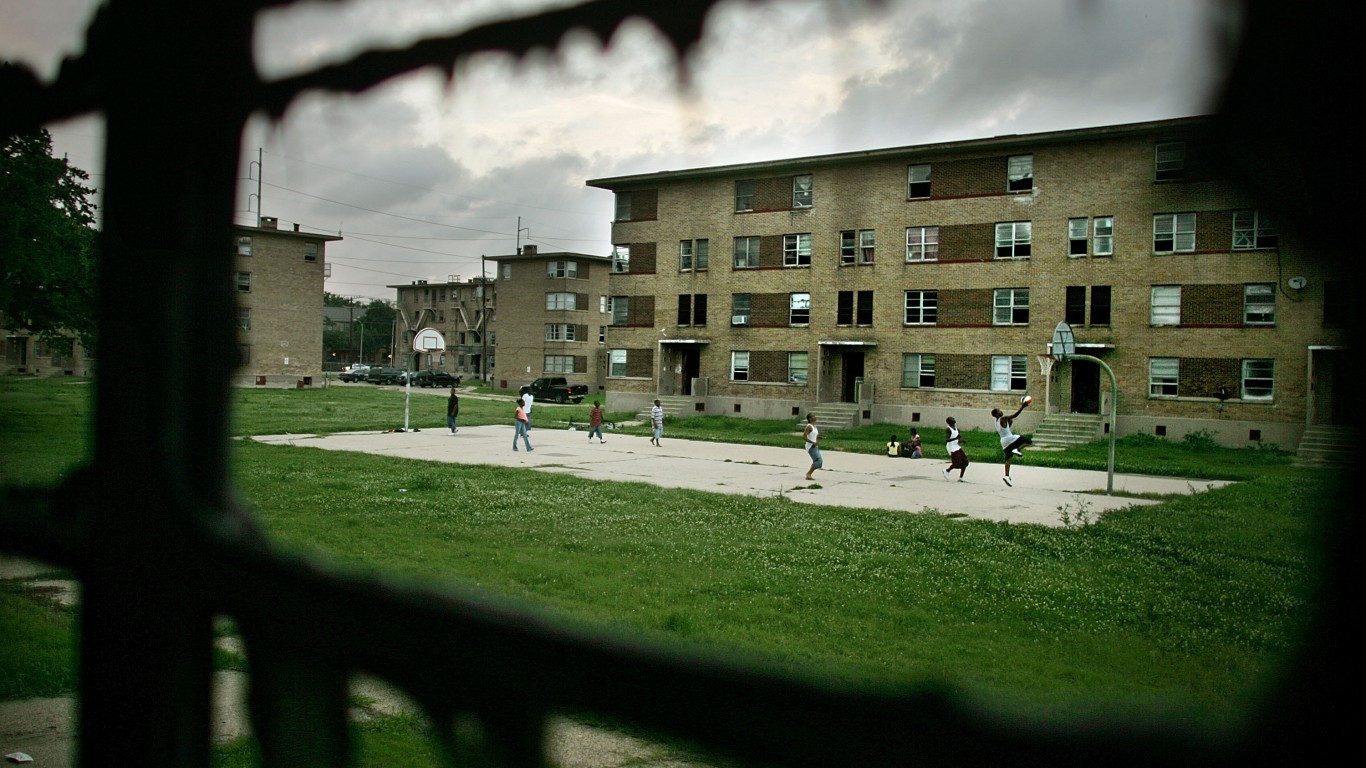
6. Louisiana
> Renters very likely to be evicted in two months: 24.9%
> Renters three or more months behind on rent: 22.7% (19th least)
> Renters receiving state or local gov’t rental assistance: 10.9% (13th most)
> January 2022 unemployment rate: 4.3% (19th highest)
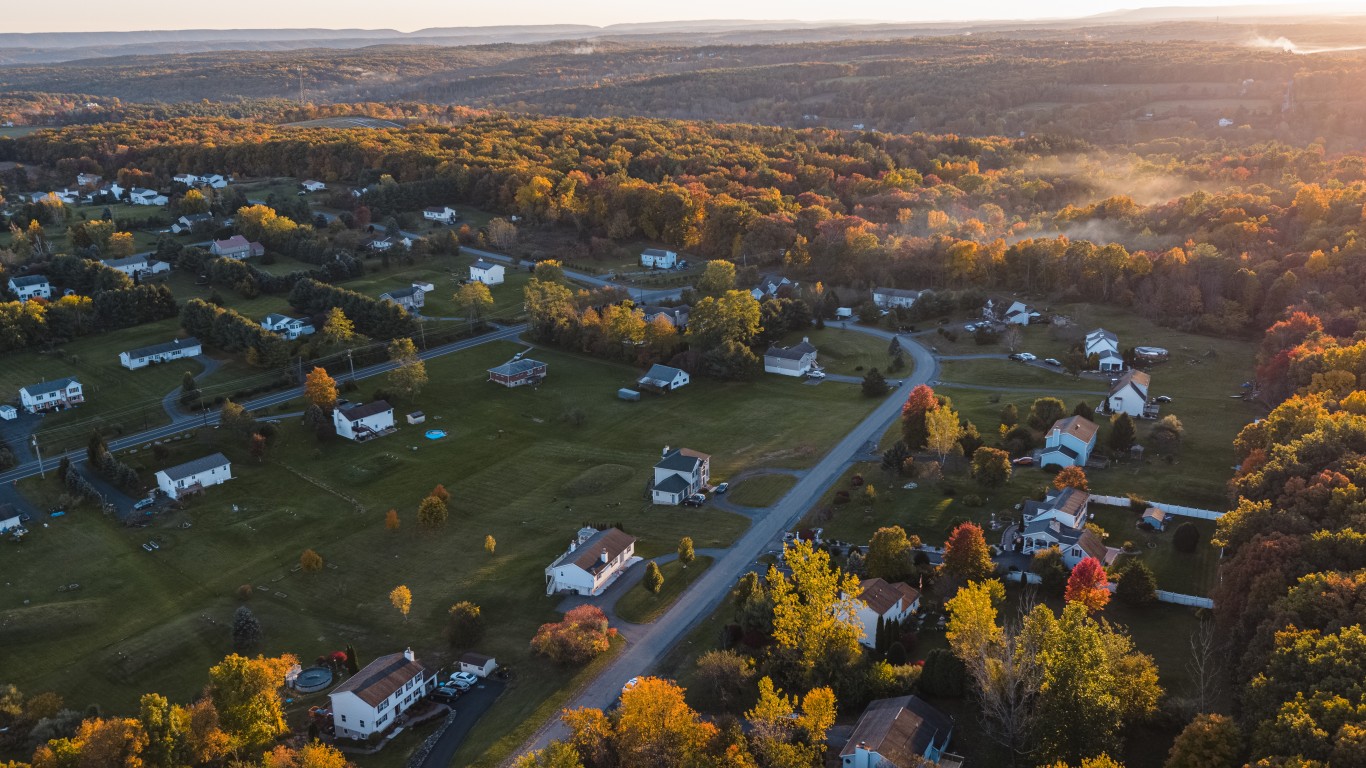
5. Pennsylvania
> Renters very likely to be evicted in two months: 25.1%
> Renters three or more months behind on rent: 31.3% (17th most)
> Renters receiving state or local gov’t rental assistance: 10.3% (18th most)
> January 2022 unemployment rate: 5.4% (4th highest)
[in-text-ad]

4. Kentucky
> Renters very likely to be evicted in two months: 26.5%
> Renters three or more months behind on rent: 36.9% (9th most)
> Renters receiving state or local gov’t rental assistance: N/A
> January 2022 unemployment rate: 4.4% (16th highest)

3. Alabama
> Renters very likely to be evicted in two months: 26.6%
> Renters three or more months behind on rent: 22.9% (20th least)
> Renters receiving state or local gov’t rental assistance: 2.9% (13th least)
> January 2022 unemployment rate: 3.1% (14th lowest)
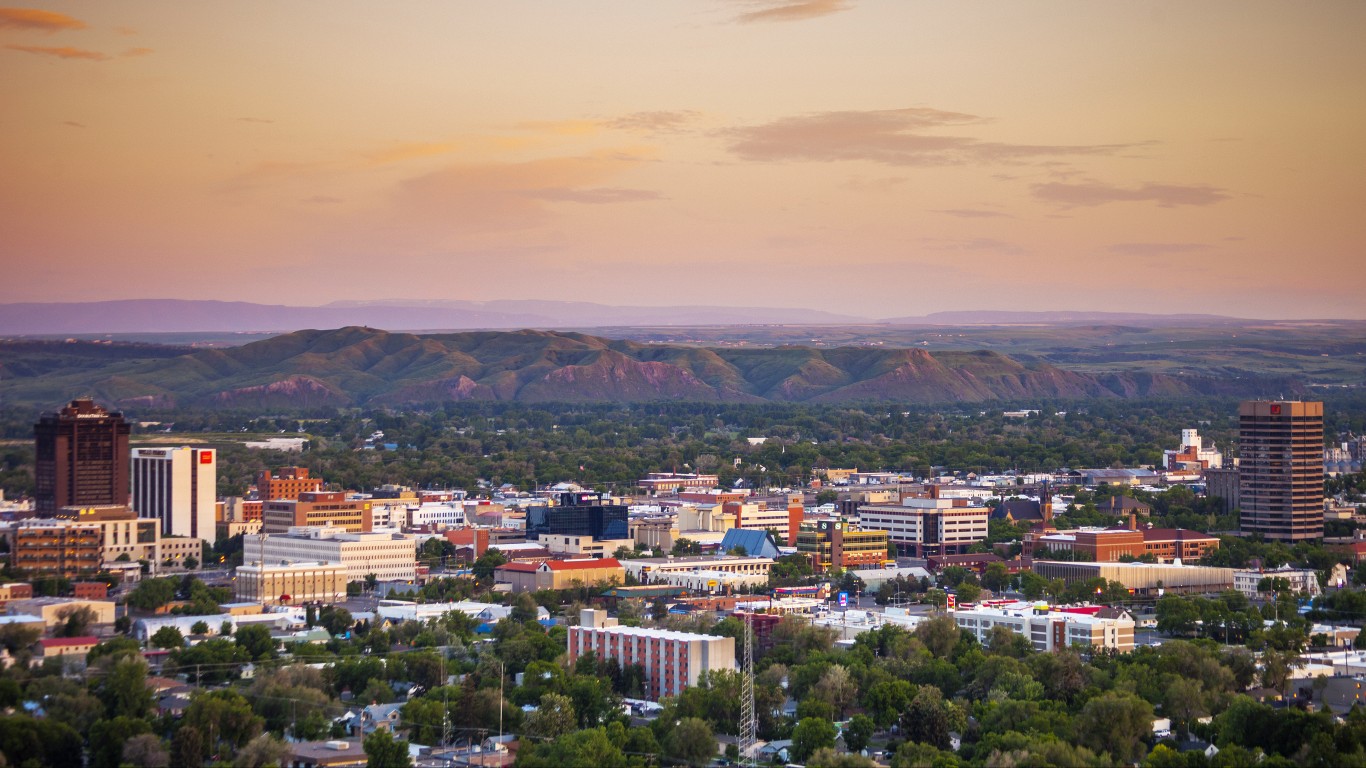
2. Montana
> Renters very likely to be evicted in two months: 30.1%
> Renters three or more months behind on rent: 18.3% (13th least)
> Renters receiving state or local gov’t rental assistance: 13.2% (9th most)
> January 2022 unemployment rate: 2.7% (6th lowest)
[in-text-ad-2]

1. Maine
> Renters very likely to be evicted in two months: 34.0%
> Renters three or more months behind on rent: 16.3% (9th least)
> Renters receiving state or local gov’t rental assistance: 11.5% (12th most)
> January 2022 unemployment rate: 4.1% (23rd highest)
Methodology
To determine the states with the most renters at risk of eviction, 24/7 Wall St. reviewed data on housing insecurity from the U.S. Census Bureau’s Household Pulse Survey for the period Jan. 26, 2022 to Feb. 7, 2022. States are ranked based on the percentage of renters who responded “very likely” to the question “How likely is it that your household will have to leave this home or apartment within the next two months because of eviction?” Supplemental data on the percentage of renters who are three or more months behind on rental payments and the percentage of renters who received emergency rental assistance through the state or local government also came from the Household Pulse Survey and is self-reported. Seasonally adjusted data on the January 2022 unemployment rate came from the Bureau of Labor Statistics.
Cash Back Credit Cards Have Never Been This Good
Credit card companies are at war, handing out free rewards and benefits to win the best customers. A good cash back card can be worth thousands of dollars a year in free money, not to mention other perks like travel, insurance, and access to fancy lounges. See our top picks for the best credit cards today. You won’t want to miss some of these offers.
Flywheel Publishing has partnered with CardRatings for our coverage of credit card products. Flywheel Publishing and CardRatings may receive a commission from card issuers.
Thank you for reading! Have some feedback for us?
Contact the 24/7 Wall St. editorial team.
 24/7 Wall St.
24/7 Wall St.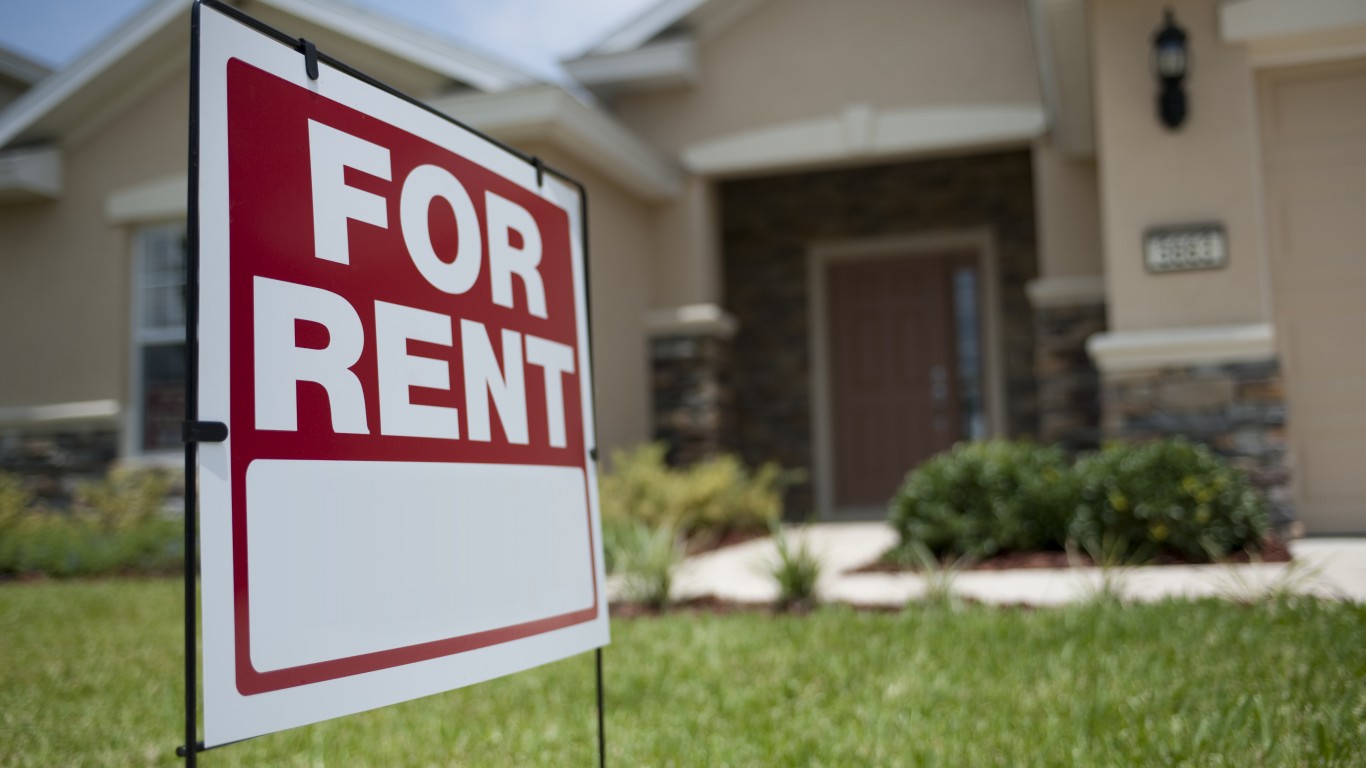 24/7 Wall St.
24/7 Wall St. 24/7 Wall St.
24/7 Wall St.
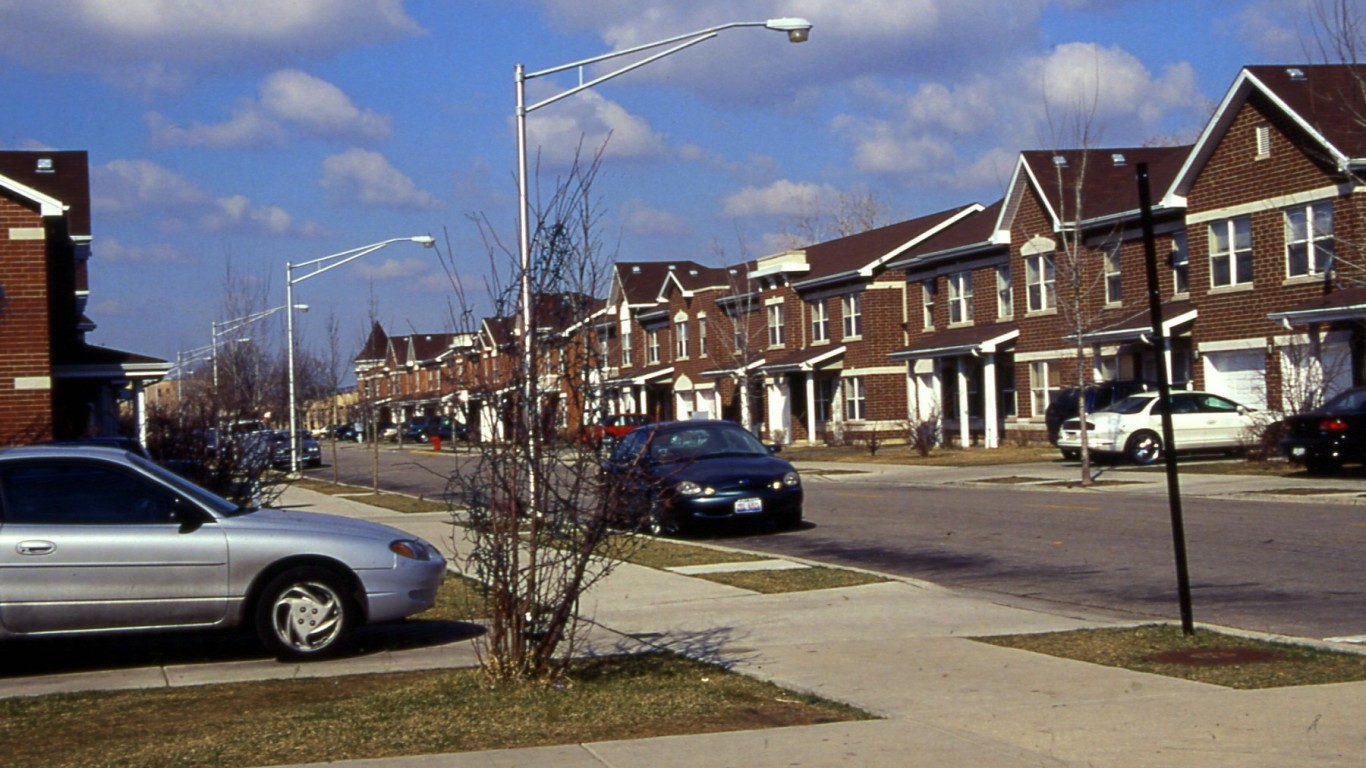
 24/7 Wall St.
24/7 Wall St. 24/7 Wall St.
24/7 Wall St.

